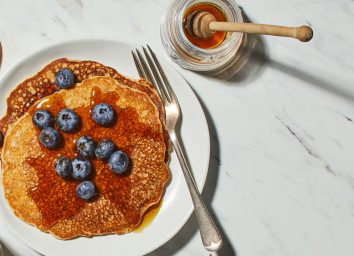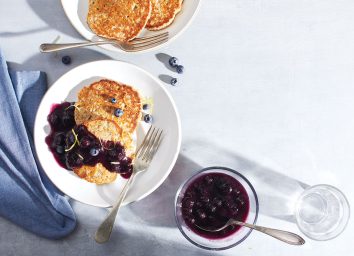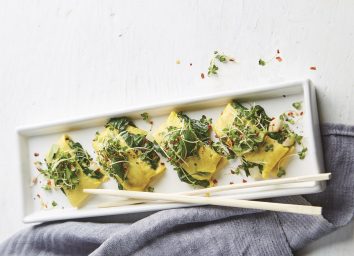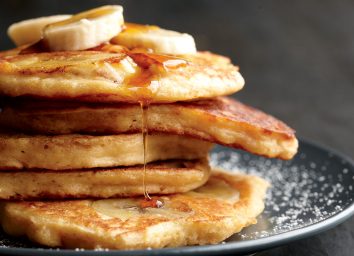What Is a Crepe? Plus: How to Master These Classic French-Style Pancakes
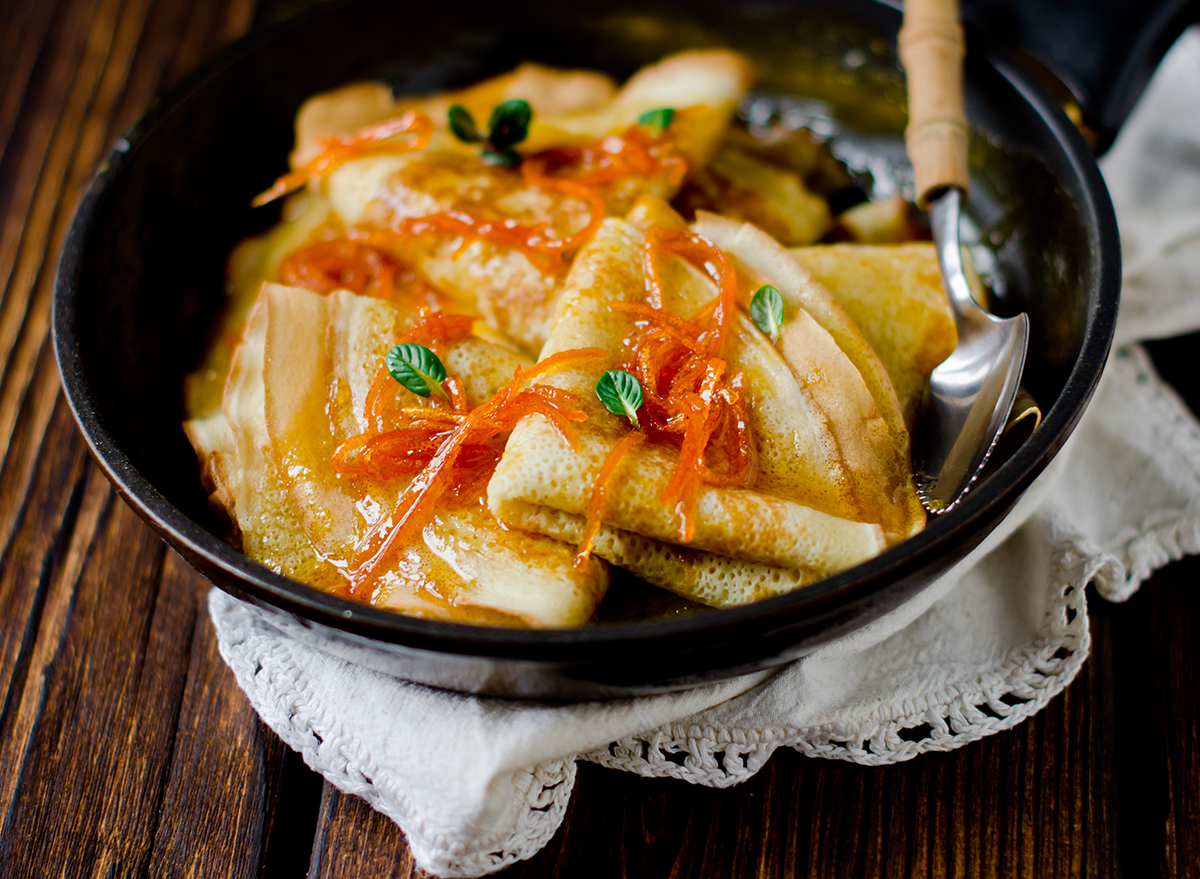
If you've ever been to a French restaurant for breakfast, you've likely had the pleasure of sampling a crepe—which is pronounced kreip. However, do you know what a crepe is made of or even how it's made? It kind of looks like a pancake, but is it considered one?
We consulted Sebastien Rondier, executive chef of Brabo Brasserie and Brabo Tasting Room, to answer those questions for you and he even shares how to make the French delicacy right at home, too.
Now, let's dive into what exactly is a crepe…
Crepe vs. pancake—what's the difference?
"Crepes are often considered thin pancakes," says Rondier. "One main difference is the pancake batter, which has baking powder to help pancakes rise and get fluffy."
When you think of a pancake, you likely think of a fluffy, thick circle with a pad of butter on top that's then drizzled with syrup, right? Technically, a crepe is a pancake that's been thinned out using a cast-iron griddle and is either stuffed or folded and topped with savory or sweet fillings.
"Almost everyone in France has a crepe pan in the kitchen," Rondier explains." They are popular all year long in France, especially on Sundays during family gatherings."
How can you make a crepe at home?
Rondier shares his recipe for sweet crepes.
Ingredients:
1 cup flour
1 1/2 cups milk
3 eggs
1 pinch of salt
1 tablespoon sugar
20 grams of melted butter
10 grams of melted brown butter
1 teaspoon of bourbon vanilla extract
Instructions:
- In a mixing bowl, add flour, salt, sugar, eggs, and vanilla. With a whisk, start mixing everything together slowly while incorporating the milk. Add the butter last.
- Let the batter rest for 1 hour at room temperature with plastic wrap on top, then strain to a chinois so your batter is very smooth.
- Heat your skillet and pour the batter into the skillet using a small ladle. Tilt and swirl the pan in a circular motion to evenly coat the entire pan. Let this cook for a minute and then flip it for another 30 seconds.
- Pile the crepes on the same plate so they stay warm and moist. Enjoy with your favorite toppings, or simply top the crepes with sugar.
What are the origins of the crepe?
"Buckwheat crepes are originally from Brittany [the northwestern region in France] and were the first to be served on dinner tables," says the chef. "They were mostly enjoyed as bread and then savory interpretations were made. White flour crepes were then created as the basis for sweet crepes."
What types of fillings can you put inside a crepe?
Rondier says there are many different fillings you can put inside of crepes.
"On the savory side, the smoked salmon and crème fraîche combination is one of the most popular fillings, and it's easy to make. For brunch, one could fill the crepe with ham, cheese, and eggs," he says. "A healthy savory option is making the crepe with buckwheat flour and filling the crepe with spinach, mushrooms or leeks. These vegetables go well with buckwheat flour."
For a sweet crepe, Rondier prefers ones that are filled with a hazelnut chocolate spread (think Nutella), whipped cream, and fresh berries. Although his favorite crepe of all time is called crepes suzette.
"There's an art to making this crepe with orange segments, orange zest, and a Grand-Marnier flambé finish," he says. "It's a delicacy that everyone should try to make at least once."
What's the key to making the perfect crepe?
"For me, adding a cube of melted butter and a cube of melted brown butter in the batter is key to making the perfect crepe," says the chef. "Not only does the butter prevent the crepe from sticking to the pan, but it adds an amazing nutty sweetness to the crepe. It's also important to pay attention as the crepe is cooking to ensure it doesn't overcook and get dry."
If you don't have access to a cast-iron skillet, a non-stick pan will suffice as well.
Protip: If you are following the keto diet and still want to partake in eating some crepes at breakfast, there are a few simple changes you can make in the ingredients. To make keto crepes, you swap out the traditional flour for coconut or almond flour, swap out cow's milk for unsweetened nut milk, and replace the sugar with a sugar substitute such as stevia or Swerve.
So, do you think you can push those pancake cravings aside so you can try whipping up your very own crepe?
